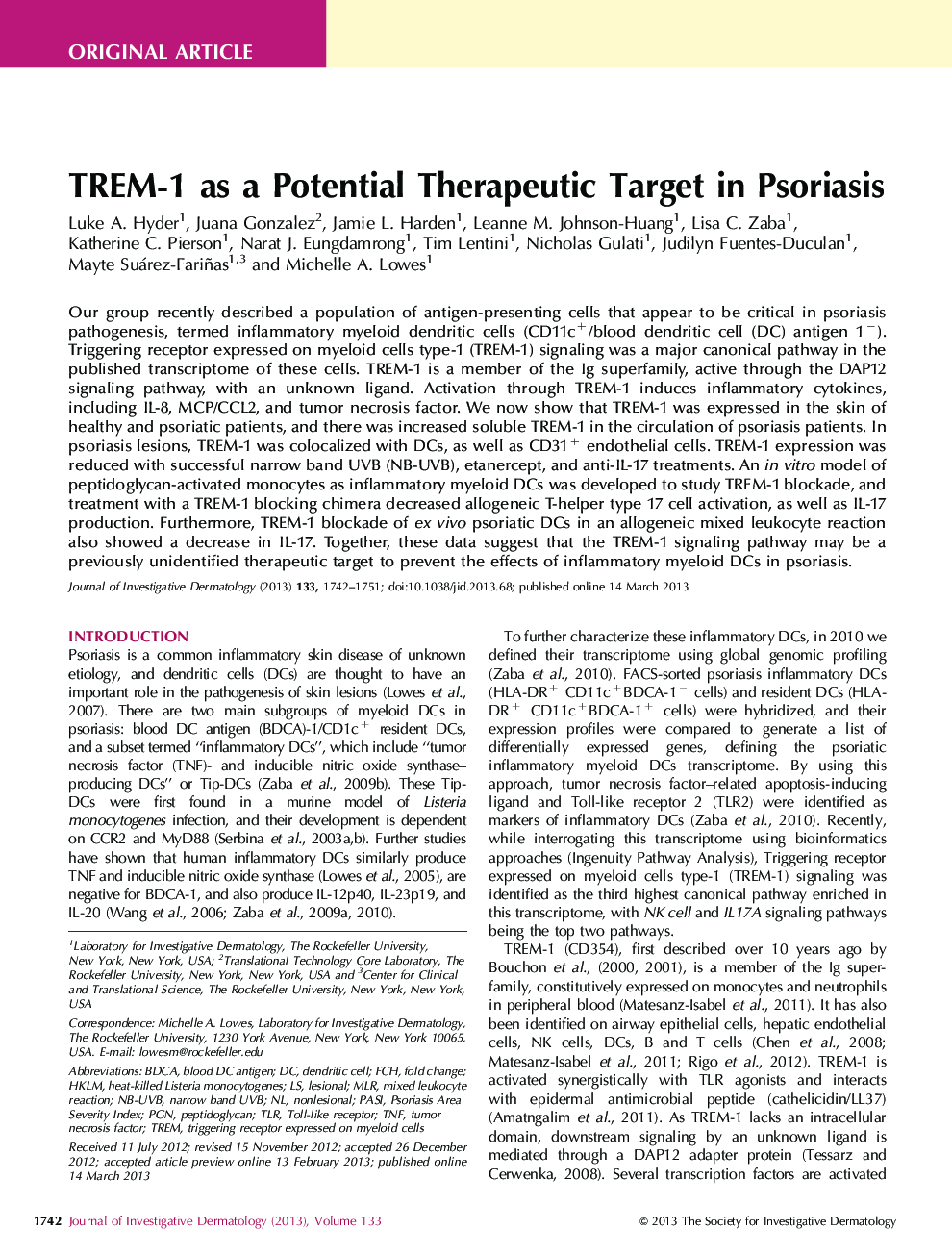| Article ID | Journal | Published Year | Pages | File Type |
|---|---|---|---|---|
| 6077637 | Journal of Investigative Dermatology | 2013 | 10 Pages |
Abstract
Our group recently described a population of antigen-presenting cells that appear to be critical in psoriasis pathogenesis, termed inflammatory myeloid dendritic cells (CD11c+/blood dendritic cell (DC) antigen 1â). Triggering receptor expressed on myeloid cells type-1 (TREM-1) signaling was a major canonical pathway in the published transcriptome of these cells. TREM-1 is a member of the Ig superfamily, active through the DAP12 signaling pathway, with an unknown ligand. Activation through TREM-1 induces inflammatory cytokines, including IL-8, MCP/CCL2, and tumor necrosis factor. We now show that TREM-1 was expressed in the skin of healthy and psoriatic patients, and there was increased soluble TREM-1 in the circulation of psoriasis patients. In psoriasis lesions, TREM-1 was colocalized with DCs, as well as CD31+ endothelial cells. TREM-1 expression was reduced with successful narrow band UVB (NB-UVB), etanercept, and anti-IL-17 treatments. An in vitro model of peptidoglycan-activated monocytes as inflammatory myeloid DCs was developed to study TREM-1 blockade, and treatment with a TREM-1 blocking chimera decreased allogeneic T-helper type 17 cell activation, as well as IL-17 production. Furthermore, TREM-1 blockade of ex vivo psoriatic DCs in an allogeneic mixed leukocyte reaction also showed a decrease in IL-17. Together, these data suggest that the TREM-1 signaling pathway may be a previously unidentified therapeutic target to prevent the effects of inflammatory myeloid DCs in psoriasis.
Related Topics
Health Sciences
Medicine and Dentistry
Dermatology
Authors
Luke A. Hyder, Juana Gonzalez, Jamie L. Harden, Leanne M. Johnson-Huang, Lisa C. Zaba, Katherine C. Pierson, Narat J. Eungdamrong, Tim Lentini, Nicholas Gulati, Judilyn Fuentes-Duculan, Mayte Suárez-Fariñas, Michelle A. Lowes,
